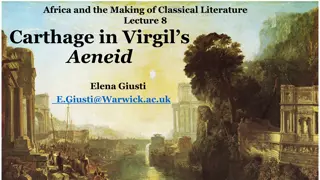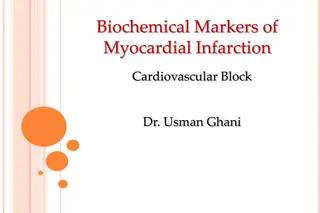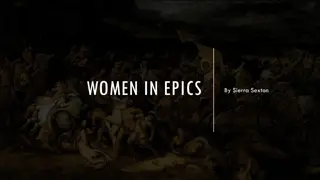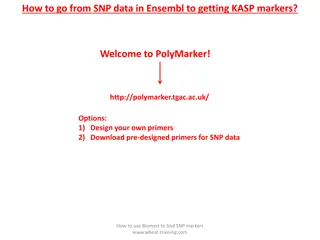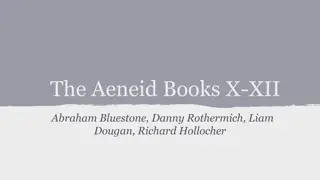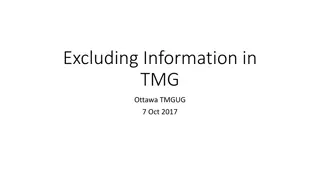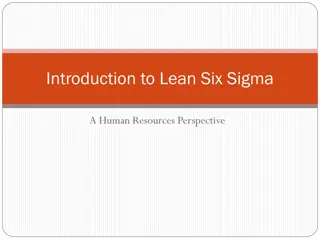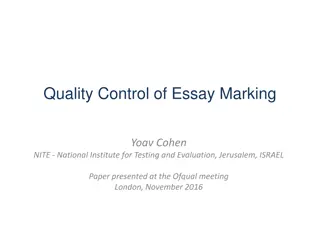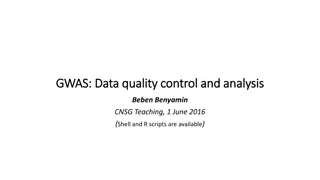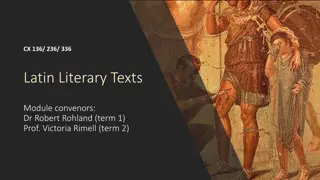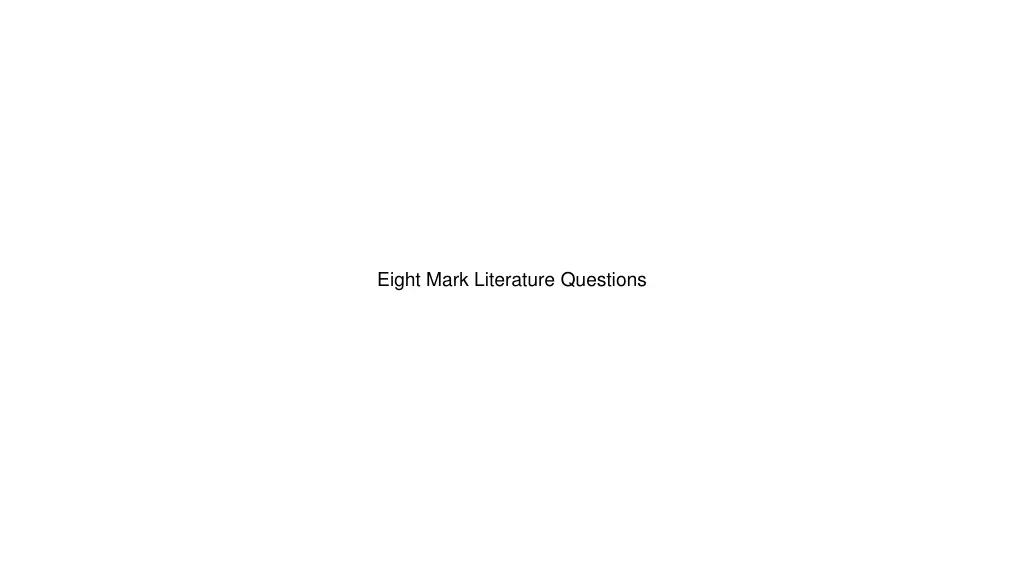
Analyzing Literature Questions for Effective Studying
Explore the unique aspects of literature comprehension questions and the analysis required, including the significance of quoting Latin for higher marks. Understand the necessary elements for an eight-mark response in literature studies.
Download Presentation

Please find below an Image/Link to download the presentation.
The content on the website is provided AS IS for your information and personal use only. It may not be sold, licensed, or shared on other websites without obtaining consent from the author. If you encounter any issues during the download, it is possible that the publisher has removed the file from their server.
You are allowed to download the files provided on this website for personal or commercial use, subject to the condition that they are used lawfully. All files are the property of their respective owners.
The content on the website is provided AS IS for your information and personal use only. It may not be sold, licensed, or shared on other websites without obtaining consent from the author.
E N D
Presentation Transcript
What is it? Unlike the comprehension questions, these require an analysis of the effects of literature you are studying. This is the same as literary analysis in English (with the extra - fun - level of needing to have translated it first ) Imagine the passage described completely factually and completely in the expected word order (SOV) and then look at what is different. THIS is the poetry!
As a rule Any question in the literature paper that requires you to quote Latin will be worth double marks (e.g. if you are asked to make two points and quote the Latin it will be worth FOUR marks) One mark is for picking out the relevant Latin quote (and translating it in brackets) One mark is for explaining how your point answers the question/explaining the effect
Therefore an eight marker requires Four points (but please write five just to be sure) Each point contains a relevant Latin quote that you then translate into English. If you don t quote any Latin, the maximum mark you can get is 5/8 AND a link/explanation as to how this answers this question
BUT They are marked in levels not by number of points
In addition An eight marker will come with some bullet points which you MIGHT WISH to consider. This means you MUST consider all bullet points If you don t, the maximum mark you can achieve is 5/8
huc omnis turba ad ripas effusa ruebat, 305 matres atque viri defunctaque corpora vita magnanimum heroum, pueri innuptaeque puellae, How does Virgil make the description of the waiting crowd dramatic: The description of the waiting spirits The extended simile used to describe them impositique rogis iuvenes ante ora parentum: quam multa in silvis autumni frigore primo lapsa cadunt folia, aut ad terram gurgite ab alto 310 quam multae glomerantur aves, ubi frigidus annus trans pontum fugat et terris immittit apricis.
My answer INTRO Virgil makes this passage vivid and dramatic in a variety of ways. This is all you need. This is not a full essay POINT ONE (addressing bullet point one) Virgil emphasises both the number of people wishing to cross the Styx and the force with which they want to do so. It is not just the crowd turba that wants to cross which already implies a large number, but the omnis turba all the crowd. Two words juxtaposed in this way dramatically emphasises the number wishing to cross. In addition this crowd is rushing ruebat and the force of this large crowd leads it be described as effusa (poured out) which suggests they rush with such enthusiasm that it spills everywhere making in dramatic.
Point two The description of the people wanting to cross is dramatic both in the vivid portrayal and the universality of the people wishing to cross. We are told that mothers and men, great-hearted heroes and boys and girls want to cross matres atque viri magnanimum heroum pueri innuptaeque puellae the list of so many different people is sad and the adjectives are poignant reminders that death comes to us all even the magnanimum heroum (emphatically placed at the start and with a polysyllabic description for emphasis) and those who did not even get the change to marry innuptae . This adjectival richness adds to the description of those wishing to pass. Point three The alliteration of p in the description of the boys and girls further underscores the sadness of them dying so young by drawing our attention to this phrase. Even the fact of death is described in a dramatic way; these people are used up in their living bodies (defuncti corpora vita) rather than simply dead . This is made all the more sad by the emphasis on the fact that the young have died before their parents in the phrase impositique rogis iuvenes ante ora parentum (and young men placed on the funeral pyres in front of the faces of their parents) suggesting perhaps young men who have died in war or similar Homeric descriptions. The heightened emotion is dramatic.
ille autem: tua me, genitor, tua tristis imago 695 But he said: You my father, your sad image saepius occurrens haec limina tendere adegit; Happening more often urged me to to these boundaries to hold you; stant sale Tyrrheno classes. da iungere dextram, Fleets stand in the Tuscan sea. Give me your right hand to clasp. da, genitor, teque amplexu ne subtrahe nostro. Give it, father, and do not withdraw yourself from our embrace. sic memorans largo fletu simul ora rigabat. Thus, speaking at the same time he was wetting his face with extensive weeping ter conatus ibi collo dare bracchia circum; 700 tried three times to place his arms around his neck ter frustra comprensa manus effugit imago, Three times the image, having been seized in vain, fled his hands, par levibus ventis volucrique simillima somno. Like the light winds and very like a winged dream. How in these lines does Virgil s use of language show Aeneas love and grief? 1. What Aeneas says 2.What Aeneas does QUESTION FROM CLASSICS LIBRARY BOOKLET OF QUESTIONS

